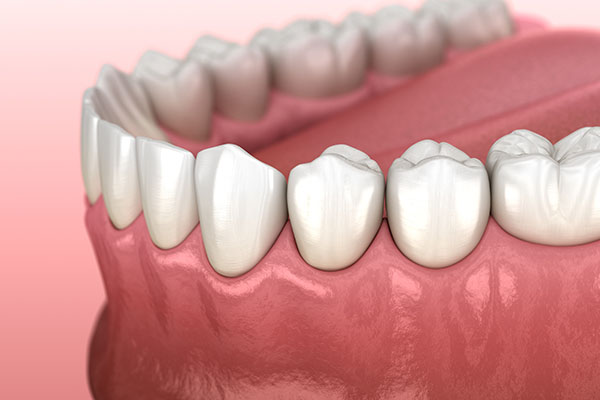 When people experience bleeding gums while brushing, they might not believe there is much cause for alarm because it is a common problem. However, this bleeding may indicate a growing gumline infection that could lead to serious complications and have a negative impact on oral health. Those who experience this issue can reverse or even prevent gum infections by understanding the causes and symptoms, and taking steps to create a healthy oral care plan.
When people experience bleeding gums while brushing, they might not believe there is much cause for alarm because it is a common problem. However, this bleeding may indicate a growing gumline infection that could lead to serious complications and have a negative impact on oral health. Those who experience this issue can reverse or even prevent gum infections by understanding the causes and symptoms, and taking steps to create a healthy oral care plan.
What causes a gum infection?
A gumline infection starts with the buildup of plaque in the mouth. Plaque is caused by food particles that mix with the bacteria already present in saliva. It tends to form at and below the gumline. When brushing and flossing are not performed consistently, plaque hardens and turns to tartar, a hard substance that cannot be removed by daily brushing. The longer tartar sits at the gumline, the more damage it can do, and the symptoms of infection are likely to increase.
Signs of gumline infection
One of the most common signs of a developing gum infection is bleeding. This may occur intermittently at first and then happen each time individuals brush. Other symptoms often develop as the infection increases:
- Swollen or reddish gums
- Chronic bad breath
- Increased spaces between the teeth
- Pain while chewing
How can a gumline infection be prevented?
Bleeding in the gums may increase if the infection goes untreated, but there are several ways individuals can prevent this issue and improve oral health.
Regular dental cleanings
Visiting a dentist regularly for cleanings and checkups can prevent gum disease. Cleanings remove tartar at the gumline and reduce the risk of inflammation. A dentist can also educate patients about how to improve brushing techniques, what type of brush to use, and how to floss properly to prevent bleeding gums. The more patients know about how to care for the gums, the lower the risk of developing an infection.
Consistent care at home
Those with the early stages of gum disease can reverse the process with a consistent daily oral care schedule of brushing two or three times a day and flossing after dinner. A dentist may also recommend an anti-bacterial mouthwash for patients battling gum disease and those who suffer from chronic illnesses and take medications that may cause dry mouth. Patients can set a timer for two to three minutes per brushing session and monitor their gums to ensure the regimen is working.
Lifestyle changes
Eating a healthy diet that includes nutrients and vitamins that support healthy teeth and bones, such as vitamins C, A, and K, can improve oral health. Individuals who smoke or use other tobacco products should seek support for quitting, and those who eat and drink sugary snacks and sodas can reduce the risk of gum disease by switching to fruits, vegetables, and sparkling water.
Conclusion
Bleeding gums are usually a sign of infection and not something to be ignored. Monitoring oral health at home and visiting a dentist at least a few times a year can keep periodontal disease at bay and ensure healthy gums at any age.
Request an appointment or call Leading Edge Dental Center at 847-796-8731 for an appointment in our Skokie office.
Related Posts
Although there are often no painful symptoms of gum disease in the early stages, it is crucial to treat gum disease as soon as it is detected. Otherwise, the disease could worsen or lead to more severe oral health concerns that require extensive treatment to address properly.Understanding the dangers of gum disease can provide the…
Are you wondering whether you can do anything to prevent gum disease? According to the Centers for Disease Control and Prevention (CDC), gum disease affects over half of all Americans over the age of 30.Early stages of gum disease, such as gingivitis, may be treated with a dental cleaning every six months and good oral…
Along with swelling and pain, consistently bleeding gums can be a symptom of gum disease. There are two main types of gum disease, gingivitis and periodontitis, with the latter being a more advanced version. In serious cases, this condition can ultimately result in tooth loss. It is helpful to understand who may be more susceptible…
